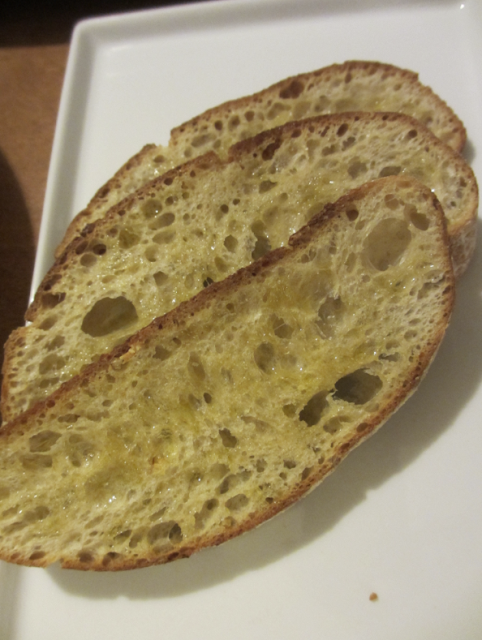I've tried making a few different coleslaws in my day, none of which I was too crazy about. There was this one coleslaw recipe that I tried that included bits of apples, nuts and gorgonzola! Sounds great right? It probably was, but I couldn't get passed how fancy that coleslaw was. When I envision or think of coleslaw I think of a side-dish that is simple, easy to make, and yet delicious. I think of coleslaw as one of those side-dishes that become a scene stealer by accident, because one wouldn't expect such a simple dish to be so... well... mouth-watering. So, sure that coleslaw may have been mouth-watering, maybe it was a scene stealer, but it wasn't by accident and definitely wasn't simple.
So here I am roughly a year later tempted to make yet another coleslaw dish, this time the tempting recipe is from Alice Waters cookbook, The Art of Simple Food. I've been cooking quite a bit from this cookbook as of late and if there's one thing I know about this cookbook it is that the recipes are indeed SIMPLE and always simply delicious!
Let me first say, that I had to make this coleslaw recipe two days in a row! Yes, the coleslaw was wonderfully delicious and absolutely simple to make. It is coleslaw with minimum ingredients, it is a recipe that takes 20 minutes or less to make, it is the basic but tasty coleslaw, no fancy stuff here my friends just plain old delicious coleslaw. So here you go, straight from Alice Water's Cookbook. Enjoy.
INGREDIENTS (for 4 servings):
1 small head of cabbage, cored and sliced into thin shreds - (You can use any cabbage you prefer, even a combination of cabbages if you like. I used Napa Cabbage that was already pre-shredded and bagged, this worked great and saved time.)
1/2 small red onion, sliced as thinly as possible - (If you prefer to have less onion feel free to add less than 1/2 small red onion. I actually love the taste of onion but found that the regular red onion was too much and so opted to use a shallot instead, this worked in giving the dish a milder onion flavor.)
Salt & fresh-ground black pepper
1 tablespoon cider or wine vinegar - (A wine vinegar will be more mild in acidity and smoother tasting than a cider vinegar. I used an apple-cider vinegar and found that the punchy acid taste was rather pleasing in the coleslaw, although I think that a champagne vinegar may have been more subtle and gentler to the palate.)
1/4 cup good mayonnaise (or 4 tablespoons olive oil) - (I opted to use mayonnaise instead since I find myself to be more familiar with the mayo-coleslaw. If you follow the amounts of the ingredients the mayonnaise is not too overpowering and would even say it is on the lighter side than most mayo-coleslaw I've had in my time. But when in doubt always use less, taste test, and if you need more just add).
RECIPE:
Mix together in a large bowl the cabbage, onions and a large pinch of salt, set aside.
Prepare the wet mixture by mixing together in a separate small to medium size bowl: the vinegar, a pinch of salt and a few cracks of black pepper. Stir the wet mixture in order to dissolve the salt.
Whisk into the wet mixture the olive oil or the mayonnaise (whichever you choose to use). Taste for acidity and salt, add if need be. (If you are using mayonnaise in lieu of olive oil mix the mayonnaise into the vinegar mixture until it is a smooth consistency and no lumps can be seen).
Pour the wet mixture over the cabbage and onions, mix well so the wet mixture is thoroughly incorporated. (I found that mixing the wet mixture into all the shredded cabbage and onions was most easily done by using a spatula).
Eat the coleslaw right away or leave it in the refrigerator for however long you please to develop the flavors. I found that refrigerating the coleslaw for a few hours to develop the flavors tasted best but it's all a matter of preference.

































